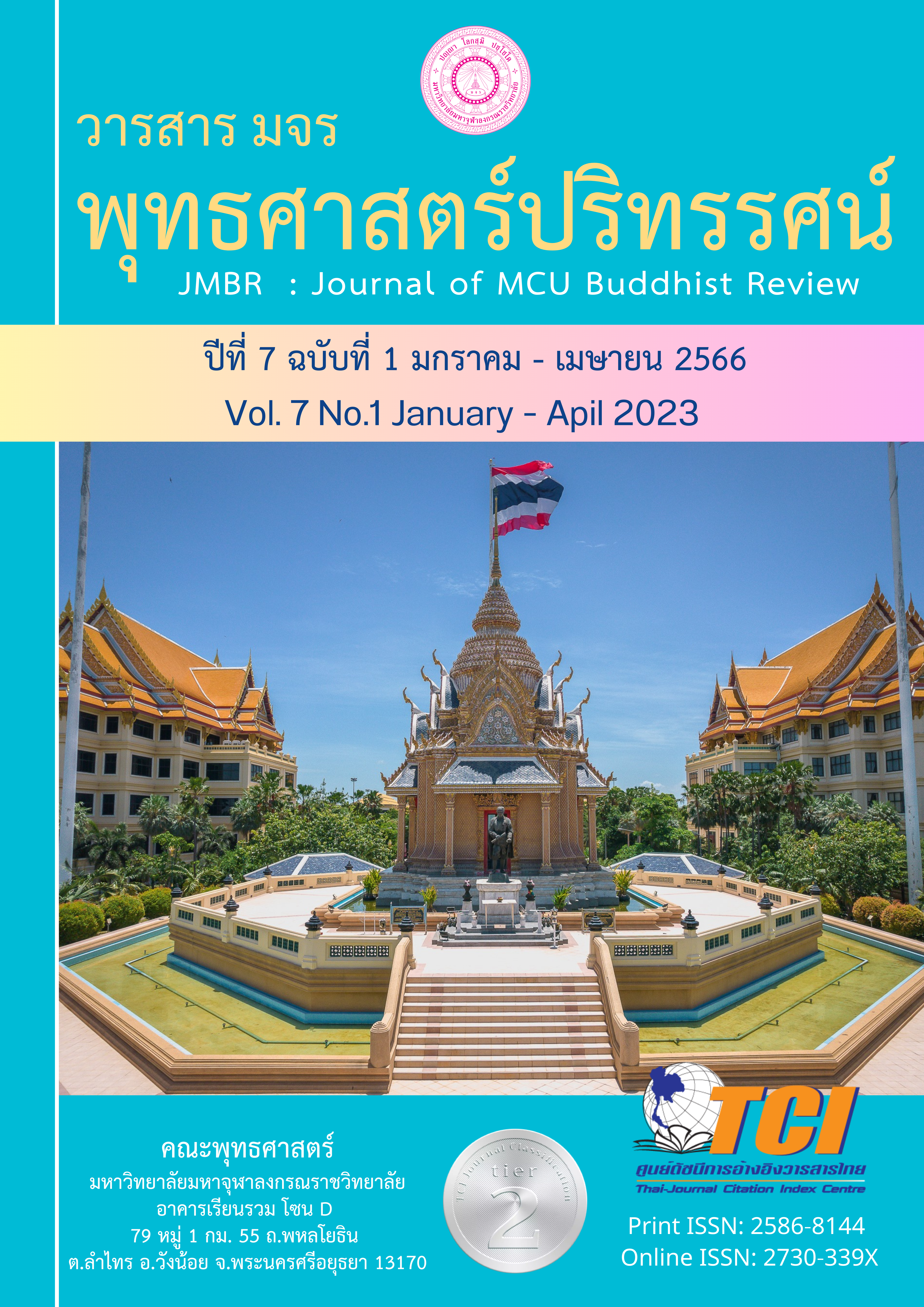การพัฒนารูปแบบกิจกรรมการเรียนรู้ผังสิ่งแวดล้อมและ แหล่งโบราณคดีในจังหวัดหนองคาย
Main Article Content
บทคัดย่อ
บทความวิจัยนี้มีวัตถุประสงค์ 1) เพื่อวิเคราะห์รูปแบบกิจกรรมการเรียนรู้สิ่งแวดล้อมและแหล่งโบราณคดี ในจังหวัดหนองคาย 2) เพื่อพัฒนารูปแบบกิจกรรมการเรียนรู้สิ่งแวดล้อมและแหล่งโบราณคดี ในจังหวัดหนองคาย 3) เพื่อศึกษาคุณค่าของการจัดกิจกรรมการเรียนรู้ผังสิ่งแวดล้อมและแหล่งโบราณคดี ในจังหวัดหนองคาย เป็นการวิจัยเชิงคุณภาพ โดยใช้กระบวนการวิจัยเชิงปฏิบัติการมาเป็นส่วนหนึ่งของการดำเนินการวิจัย เน้นการศึกษาวิเคราะห์ทั้งในเชิงพื้นที่และกลุ่มเป้าหมาย มีการจัดกระบวนการวิจัยด้วยการถอดบทเรียนและการบูรณาการข้อมูลที่ได้จากการสัมภาษณ์ การสังเกต และการปฏิบัติการร่วมกันในพื้นที่ศึกษาและกลุ่มเป้าหมายที่กำหนดไว้โดยใช้กระบวนการตามวงจรเดมมิง (PDCA) เป็นเครื่องมือในการดำเนินงานการวิจัยเชิงปฏิบัติการแบบมีส่วนร่วมในทุกขั้นตอน
ผลการวิจัยพบว่า แนวคิดเรื่องกิจกรรมการเรียนรู้นั้นมาจากการศึกษาเกี่ยวกับทฤษฎีการเรียนรู้ โดยแนวคิดเรื่องการเรียนรู้นั้นมีนักคิดหรือนักปรัชญาหลายท่านได้อธิบายเอาไว้โดยเฉพาะนักคิดชาวตะวันตก หลายท่านที่ได้เสนอทฤษฎีเกี่ยวกับการเรียนรู้และกระบวนการรวมถึงผลของการเรียนรู้เอาไว้แตกต่างกัน ส่วนในทางพระพุทธศาสนาก็มีคำสอนที่เกี่ยวกับการเรียนรู้เอาไว้ว่าการเรียนรู้ของมนุษย์นั้น เกิดมาจากกระบวนการทำงานของอายตนะภายนอกและอายตนะภายใน จนก่อให้เกิดการรับรู้และแสดงพฤติกรรมการเรียนรู้ออกมาภายนอกโดยผลการเรียนรู้นั้นย่อมส่งผลต่อการแสดงออกทางกายวาจาและจิตใจ
การพัฒนารูปแบบกิจกรรมการเรียนรู้นั้นคณะผู้วิจัยได้ดำเนินการพัฒนาการเรียนรู้โดยการจัดกิจกรรมการเรียนรู้อย่างหลากหลาย เพื่อกระตุ้นให้ผู้ร่วมกิจกรรมได้เห็นคุณค่าของผังสิ่งแวดล้อมและแหล่งโบราณคดีในจังหวัดหนองคายผ่านกิจกรรม เช่น กิจกรรมโครงการอบรมยุวมัคคุเทศก์เพื่อการเรียนรู้ผังสิ่งแวดล้อมและแหล่งโบราณคดีในจังหวัดหนองคาย กิจกรรมการคัดลอกและอ่านจารึกในพื้นที่ศึกษา กิจกรรมการพัฒนาแหล่งโบราณคดีเพื่อชุมชน เพื่อกระตุ้นให้ผู้เข้าร่วมกิจกรรมและสังคมได้เกิดการเรียนรู้และเกิดความสำนึกในการอนุรักษ์สิ่งแวดล้อมและแหล่งโบราณคดีในชุมชนของตน
Article Details

อนุญาตภายใต้เงื่อนไข Creative Commons Attribution-NonCommercial-NoDerivatives 4.0 International License.
- บทความที่ได้รับการตีพิมพ์เป็นลิขสิทธิ์ของวารสาร มจร พุทธศาสตร์ปริทรรศน์
- ข้อความใดๆ ที่ปรากฎในบทความที่ได้รับการตีพิมพ์ในวารสาร ถือเป็นความรับผิดชอบของผู้เขียนบทความ และข้อคิดเห็นนั้นไม่ถือว่าเป็นทัศนะและความรับผิดชอบของกองบรรณาธิการวารสาร มจร พุทธศาสตร์ปริทรรศน์
เอกสารอ้างอิง
โจเซฟ ดี. โนแวก และ โกวิน ดี. บ๊อบ. (2534). ศิลปะการเรียนรู้. แปลโดย สวนิต ยมาภัย และ สวัสดิ์ ปทุมราช, งานแปลของสำนักงานคณะกรรมการวิจัยแห่งชาติ อันดับที่ 136, กรุงเทพฯ: คุรุสภาลาดพร้าว.
ปรียาพร วงศ์อนุตรโรจน์. (2548). จิตวิทยาการศึกษา. กรุงเทพฯ: ศูนย์สื่อเสริมกรุงเทพ.
ณัฐพนธ์ อนุสรณ์ทรางกูร. (2555). ปัจจัยที่ส่งผลต่อการเรียนรู้พื้นฐานการใช้คอมพิวเตอร์เพื่อสร้างงานออกแบบของผู้เรียนที่มีพื้นฐานด้านการเรียนที่แตกต่างกัน. รายงานวิจัย มหาวิทยาลัยราชภัฎสวนสุนันทา.
พระครูปลัดธีระชัย อชิโต (ธีรญาณ วีระชัยกุล). (2560). รูปแบบการเรียนรู้เชิงพุทธในศตวรรษที่ 21. วารสารสถาบันวิจัยญาณสังวร. 8(2), 70-79.
พระมหาหนูพัฒน์ กองบาง. (2544). การศึกษาวิเคราะห์วิธีคิดแบบโยนิโสมนสิการในพระสุตตันตปิฎก. วิทยานิพนธ์ปริญญาศิลปศาสตร์มหาบัณฑิต บัณฑิตวิทยาลัย: มหาวิทยาลัยธรรมศาสตร์.
พระมหานรินทร์ ทวีสิทธิ์. (2547). การวิเคราะห์แนวคิดของกระบวนการสิ่งแวดล้อมศึกษาโดยใช้หลักการคิดแบบโยนิโสมนสิการ. วิทยานิพนธ์ปริญญาศิลปศาสตรมหาบัณฑิต บัณฑิตวิทยาลัย: มหาวิทยาลัยเชียงใหม่.
ศิริกุล ทรัพย์จันทร์. (2548). การพัฒนาหลักสูตรท้องถิ่นเรื่อง มัคคุเทศก์น้อยเพื่อการท่องเที่ยวเชิงนิเวศช่วงชั้นที่ 2 โรงเรียนบ้านโปง อาเภอสันทราย จังหวัดเชียงใหม่. เชียงใหม่: มหาวิทยาลัยเชียงใหม่.
สาลี ทองทิว. (2542). การพัฒนาหลักสูตรมัคคุเทศก์น้อยงานไม้แกะสลักและงานไม้สาหรับหมู่บ้านหัตถกรรมไม้และแกะสลักบ้านถวาย: กรณีศึกษาโรงเรียนบ้านต้นแก้ว อาเภอหางดง จังหวัดเชียงใหม่. เชียงใหม่: มหาวิทยาลัยเชียงใหม่.
Bernard, H. W.. (1972). Psychology of Learning and Teaching. New York: McGRAW-Hill Book Company, Inc..
Bolles, R. C. (1975). Learning Theory. New York: Holt Rinehart and Winston.
Keachie, W. J. Mc & Doyle, C. L.. (1967). Psychology. Addison-Wealey Publishing Company, Inc..


